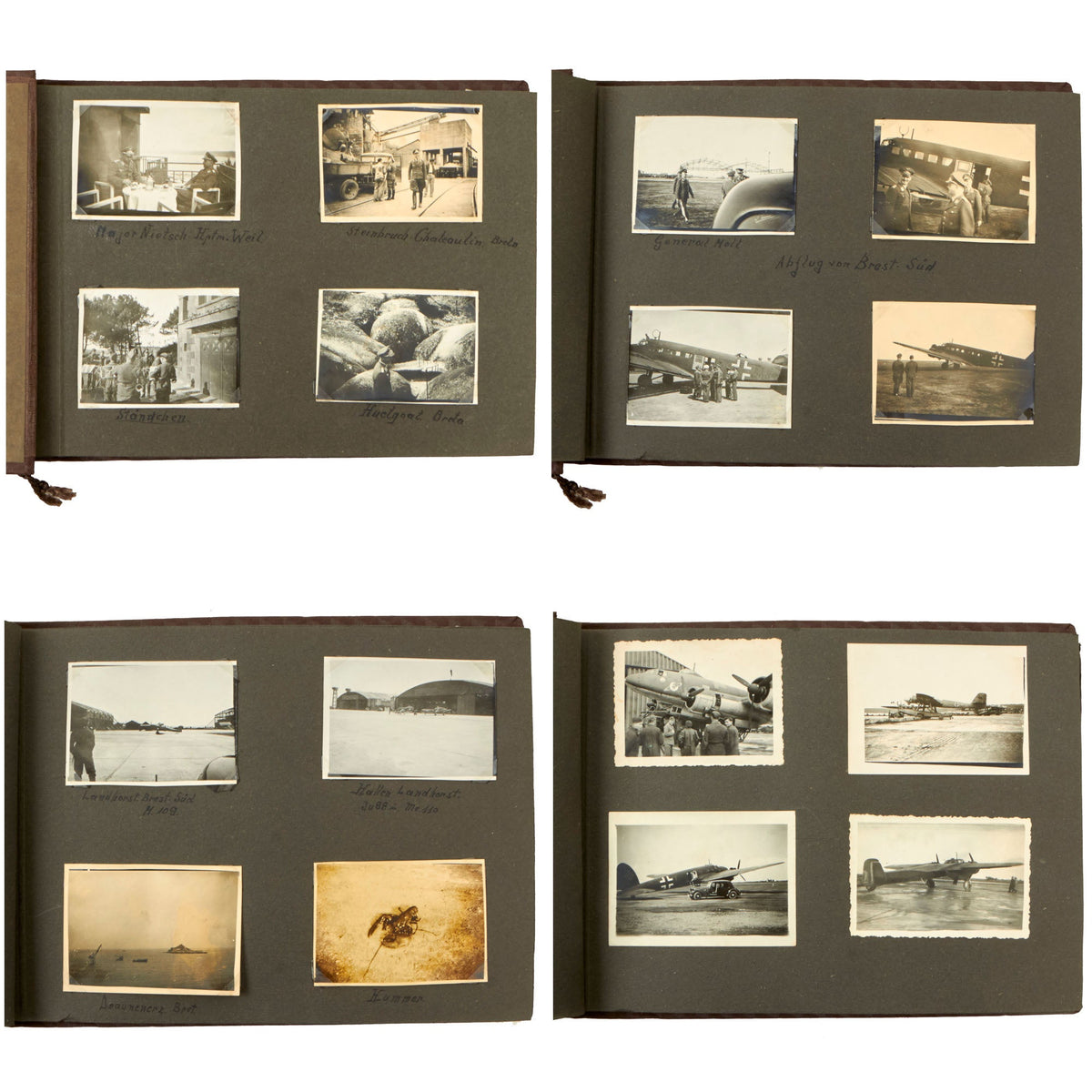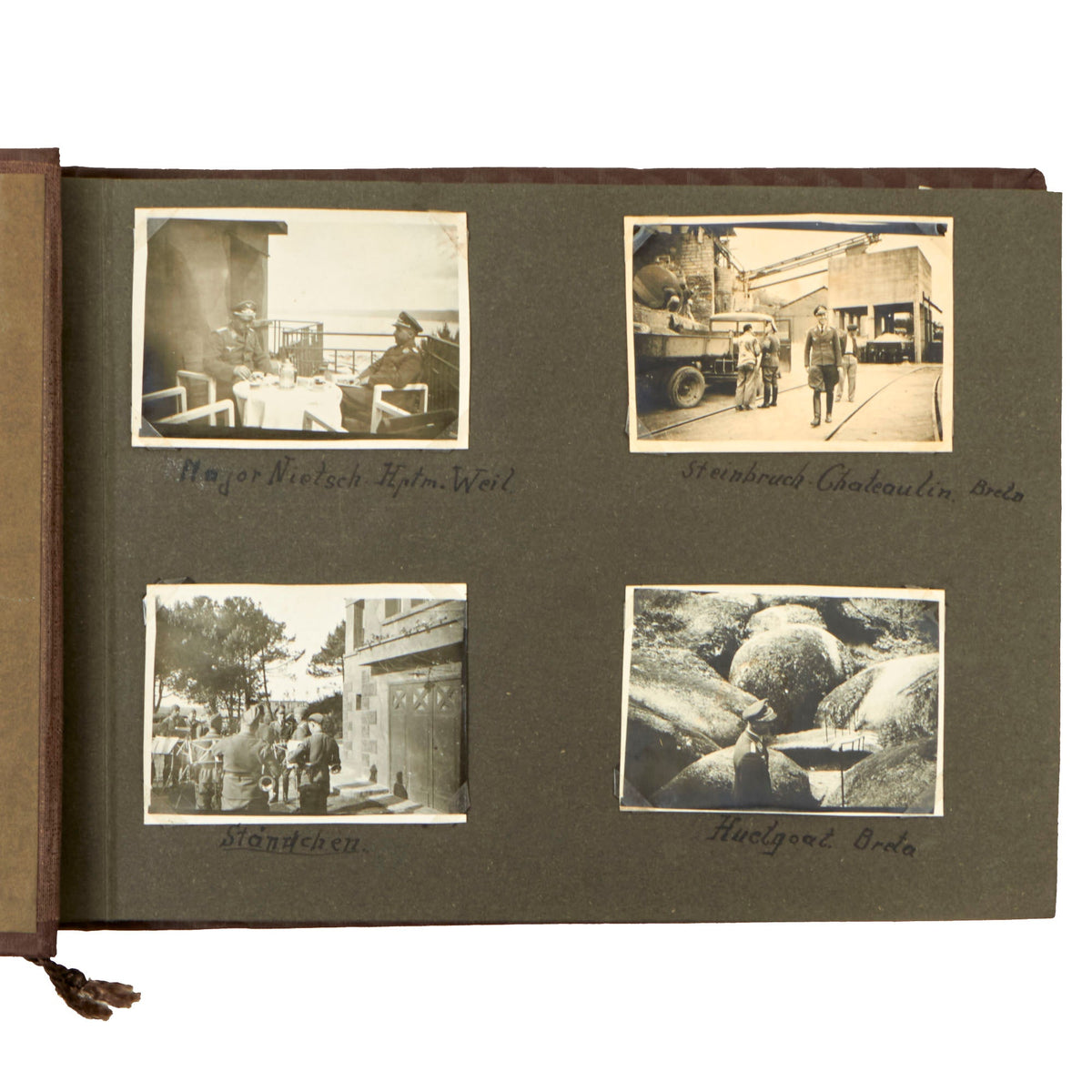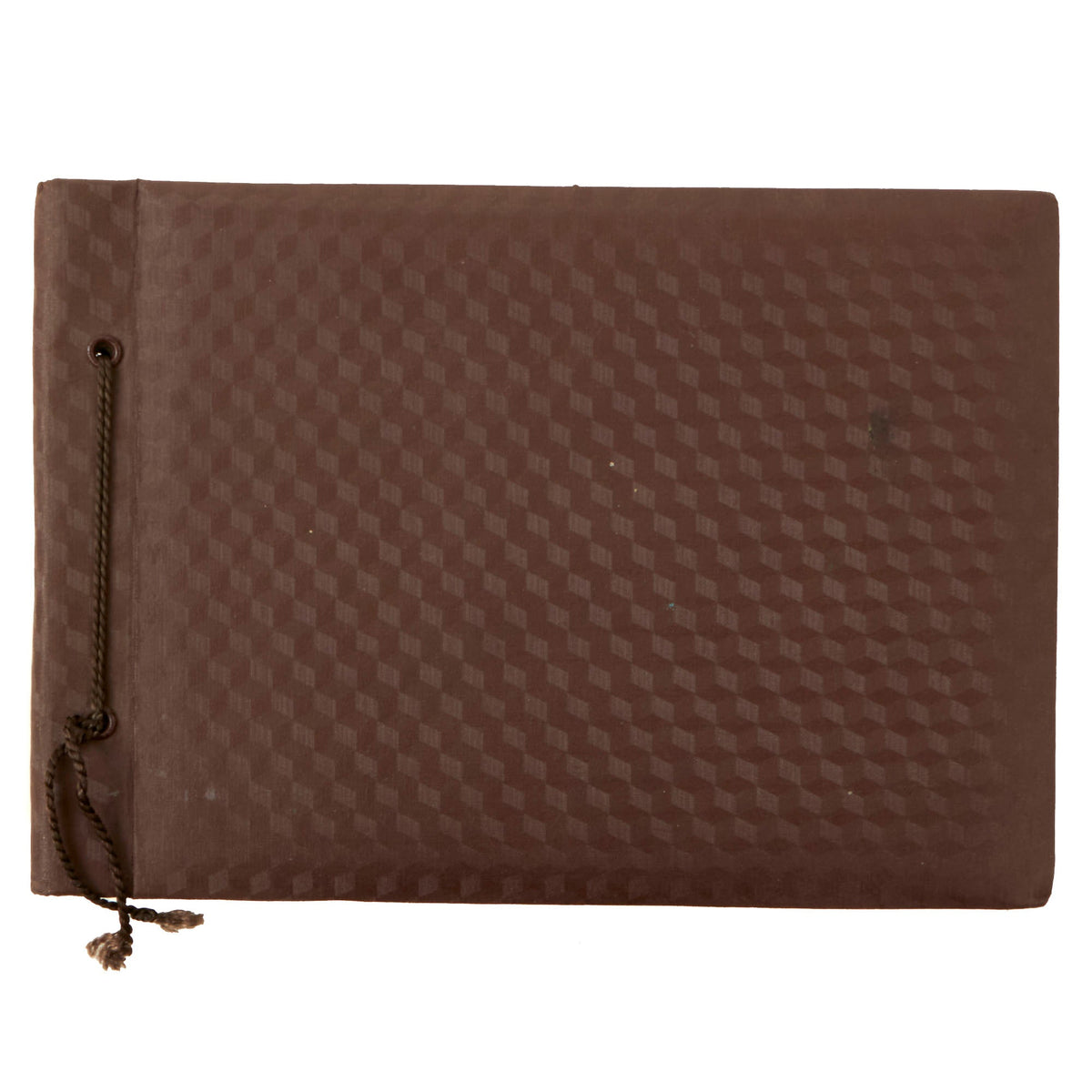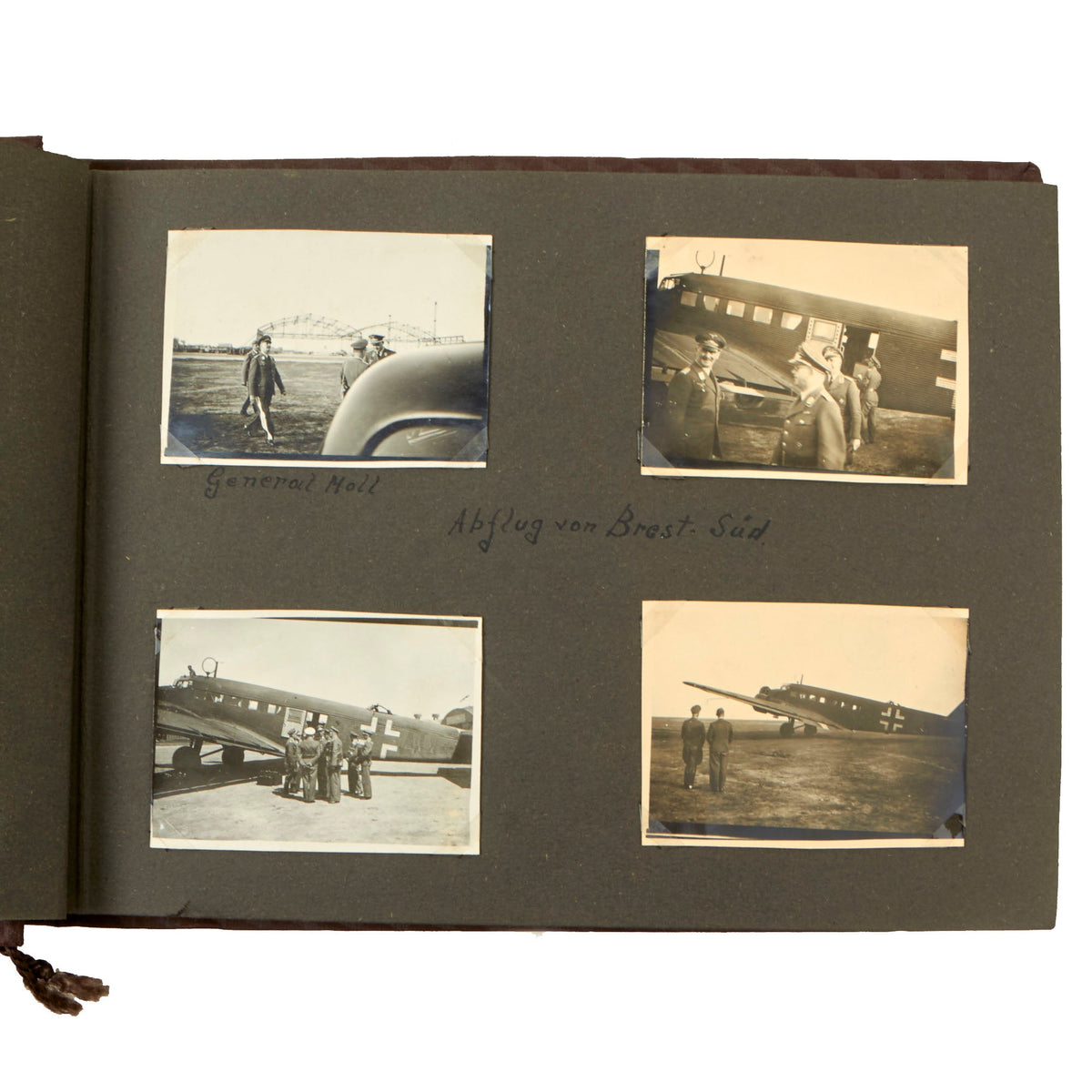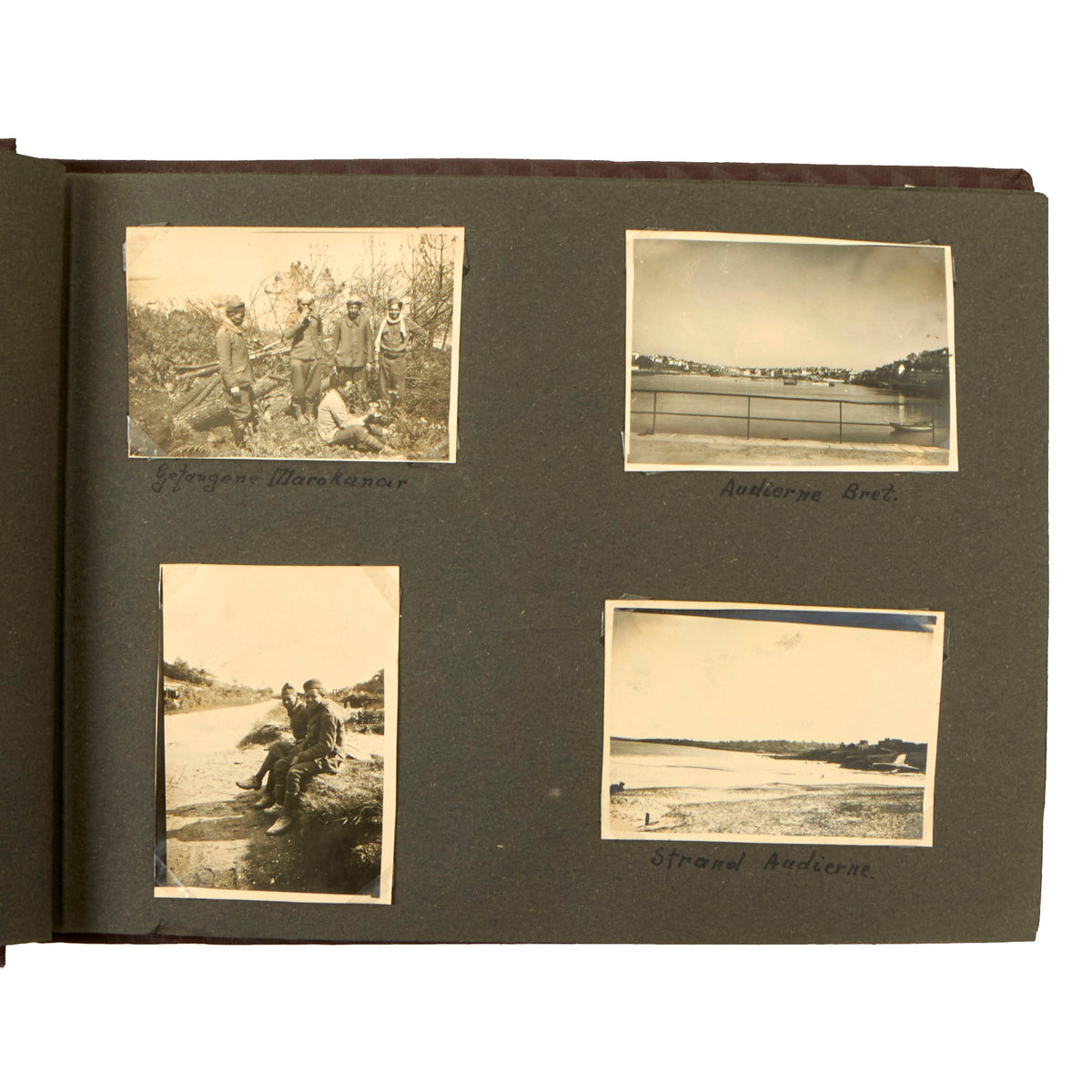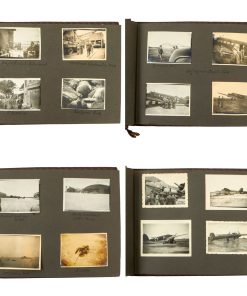Original German WWII Luftwaffe Personal Photo Album – 63 Pictures Original Items
$ 350,00 $ 105,00
Original Item: One-Of-A-Kind. This is a wonderful Luftwaffe personal photo album with what appear to be almost entirely personal photos taken in the field. They show a large variety of different types of scenes, some of which look to be in North Africa, showing captured Moroccans. There are a lot of Luftwaffe officers shown in the early pages, sometimes eating a meal, which looks to be in France. Later pictures show more hangars and other areas in the field, along with a good number of airplanes. Definitely some great variety in this album!
The cover is lovely brown leatherette, with a very interesting rhombille grid embossed pattern, with no markings on the exterior. The album measures approximately 11″ x 7 3/4″ x 5/8″,showing a bit of wear on the cover and around the edges, but nothing major. There is a small label on the inner back cover, and the pages are secured into the cover with a brown nylon cord.
A total of 63 photographs fill this album, making it a treasure-trove of images taken from the viewpoint of a young, patriotic German soldier. These are contained on the first 15 of the 23 total pages, and there are even captions on the first 6 or so pages! The photos are only on the front sides of the pages, so there are no separators used in the album. All of the photos are held in place with period corner tabs or adhesive, some of which has failed over time.
Historical records like this album have become priceless time capsules that provide an incomparable level of insight into the individual experience of the Second
World War, now that almost eighty years have passed.
The older albums such as these usually withstand the ravages of time. The leather or fabric covers may wear, but the pages stay well intact. The black paper albums of the early 20th century are more fragile, while the glue from magnetic albums can damage photographs. And, as with all old photographs, keep albums in a safe, climate controlled environment.
The Luftwaffe was the aerial-warfare branch of the German Wehrmacht before and during World War II. Germany’s military air arms during World War I, the Luftstreitkräfte of the Imperial Army and the Marine-Fliegerabteilung of the Imperial Navy, had been disbanded in May 1920 in accordance with the terms of the 1919 Treaty of Versailles which banned Germany from having any air force.
During the interwar period, the German armed forces secretly trained pilots – in violation of the Treaty – at Lipetsk Air Base in the Soviet Union. With the rise of the NSDAP (in power from 1933) and the repudiation of the Versailles Treaty, the Luftwaffe’s existence was publicly acknowledged on 26 February 1935, just over two weeks before open defiance of the Versailles Treaty through the announcement of German rearmament and conscription on 16 March. The Condor Legion, a Luftwaffe detachment sent to aid Nationalist forces in the Spanish Civil War, provided the force with a valuable testing-ground for new tactics and aircraft. Partially as a result of this combat experience, the Luftwaffe had become one of the most sophisticated, technologically advanced, and battle-experienced air forces in the world when World War II broke out in 1939. By the summer of 1939, the Luftwaffe had twenty
Fast Shipping with Professional Packaging
Thanks to our longstanding association with UPS FedEx DHL, and other major international carriers, we are able to provide a range of shipping options. Our warehouse staff is expertly trained and will wrap your products according to our exact and precise specifications. Prior to shipping, your goods will be thoroughly examined and securely secured. We ship to thousands clients each day across multiple countries. This shows how we're dedicated to be the largest retailer on the internet. Warehouses and distribution centres can be located throughout Europe as well as the USA.
Note: Orders with more than one item will be assigned a processing date depending on the item.
Before shipping before shipping, we'll conduct a thorough inspection of the items you have ordered. Today, the majority of orders will be delivered within 48 hours. The delivery time will be between 3-7 days.
Returns
The stock is dynamic and we cannot completely manage it because multiple stakeholders are involved, including our factory and warehouse. So the actual stock may alter at any time. It's possible that you may not receive your order once the order has been made.
Our policy is valid for a period of 30 days. If you don't receive the product within 30 days, we are not able to issue a refund or an exchange.
You can only return an item if it is unused and in the same state as the day you received it. You must have the item in its original packaging.
Related products
Uncategorized
Uncategorized
Uncategorized
Uncategorized
Armoured Fighting Vehicles of the World: AFVs of World War One (Hardcover Book) New Made Items
Uncategorized
Uncategorized
Uncategorized
Band of Brothers ORIGINAL GERMAN WWII Le. F.H. 18 10.5cm ARTILLERY PIECE Original Items
Uncategorized
Uncategorized
Uncategorized
Uncategorized
Uncategorized
Uncategorized
Uncategorized
Uncategorized
Uncategorized
Uncategorized
Angolan Rebel 1970s era 60mm Inert Display Mortar from Angolan Civil War Original Items
Uncategorized
